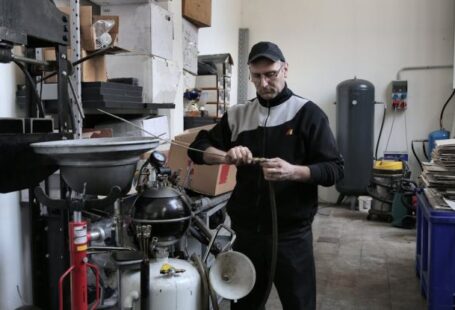As industries continue to evolve and embrace automation, the concept of smart factories is gaining momentum. These factories leverage cutting-edge technologies to optimize efficiency, productivity, and safety. Among the various technologies driving this transformation, collaborative robotics stands out as a pivotal player in shaping the future of manufacturing. By combining the strengths of human workers with the precision and consistency of robots, collaborative robotics promises to revolutionize the way factories operate. In this article, we delve into the role that collaborative robotics is set to play in future smart factories and explore the benefits and challenges associated with this innovative approach to manufacturing.
**Enhancing Efficiency and Productivity**
One of the primary advantages of integrating collaborative robotics into smart factories is the significant boost in efficiency and productivity. Collaborative robots, also known as cobots, are designed to work alongside human employees, handling repetitive tasks with speed and precision. By automating mundane and labor-intensive activities, cobots free up human workers to focus on more complex and value-added tasks. This symbiotic relationship between humans and robots leads to enhanced overall productivity and efficiency within the manufacturing process.
**Ensuring Flexibility and Adaptability**
Another key aspect of collaborative robotics in smart factories is the ability to quickly adapt to changing production needs. Traditional industrial robots are typically deployed for specific tasks and require reprogramming or significant reconfiguration to handle new operations. In contrast, cobots are designed to be easily programmable and retrained, allowing them to swiftly switch between different tasks and workflows. This flexibility enables smart factories to respond rapidly to market fluctuations, customize production processes, and maintain a competitive edge in dynamic industries.
**Promoting Safety and Ergonomics**
Safety is a paramount concern in manufacturing environments, and collaborative robotics offer a compelling solution to enhance workplace safety. Cobots are equipped with advanced sensors and collision detection technology that allow them to operate safely alongside human workers without the need for physical barriers or safety cages. By reducing the risk of accidents and injuries, collaborative robotics create a safer working environment for employees. Additionally, cobots can handle strenuous or hazardous tasks, minimizing ergonomic strain on human workers and improving overall workplace well-being.
**Facilitating Human-Robot Collaboration**
Effective collaboration between humans and robots is crucial for the success of smart factories. Collaborative robotics foster a harmonious working relationship by seamlessly integrating into existing workflows and processes. Unlike traditional industrial robots that operate in isolation, cobots interact with human workers in real-time, enabling intuitive communication and coordination on the factory floor. This human-robot collaboration not only enhances operational efficiency but also promotes a sense of teamwork and camaraderie among employees, leading to a more cohesive and productive work environment.
**Addressing Implementation Challenges**
While the potential benefits of collaborative robotics in smart factories are undeniable, there are several challenges that need to be addressed for successful implementation. One of the key challenges is the initial cost of deploying cobots, which can be a significant investment for manufacturing facilities. However, advancements in technology and the growing availability of affordable cobot solutions are making it more accessible for companies of all sizes to adopt collaborative robotics.
**Looking Forward: The Future of Smart Factories**
As we look ahead to the future of manufacturing, it is clear that collaborative robotics will play a pivotal role in shaping the landscape of smart factories. By harnessing the power of human-robot collaboration, smart factories can achieve unprecedented levels of efficiency, productivity, and safety. As technology continues to evolve and cobot capabilities expand, the possibilities for innovation in manufacturing are endless. With the right strategy and investment, smart factories equipped with collaborative robotics are poised to lead the way in the fourth industrial revolution.





